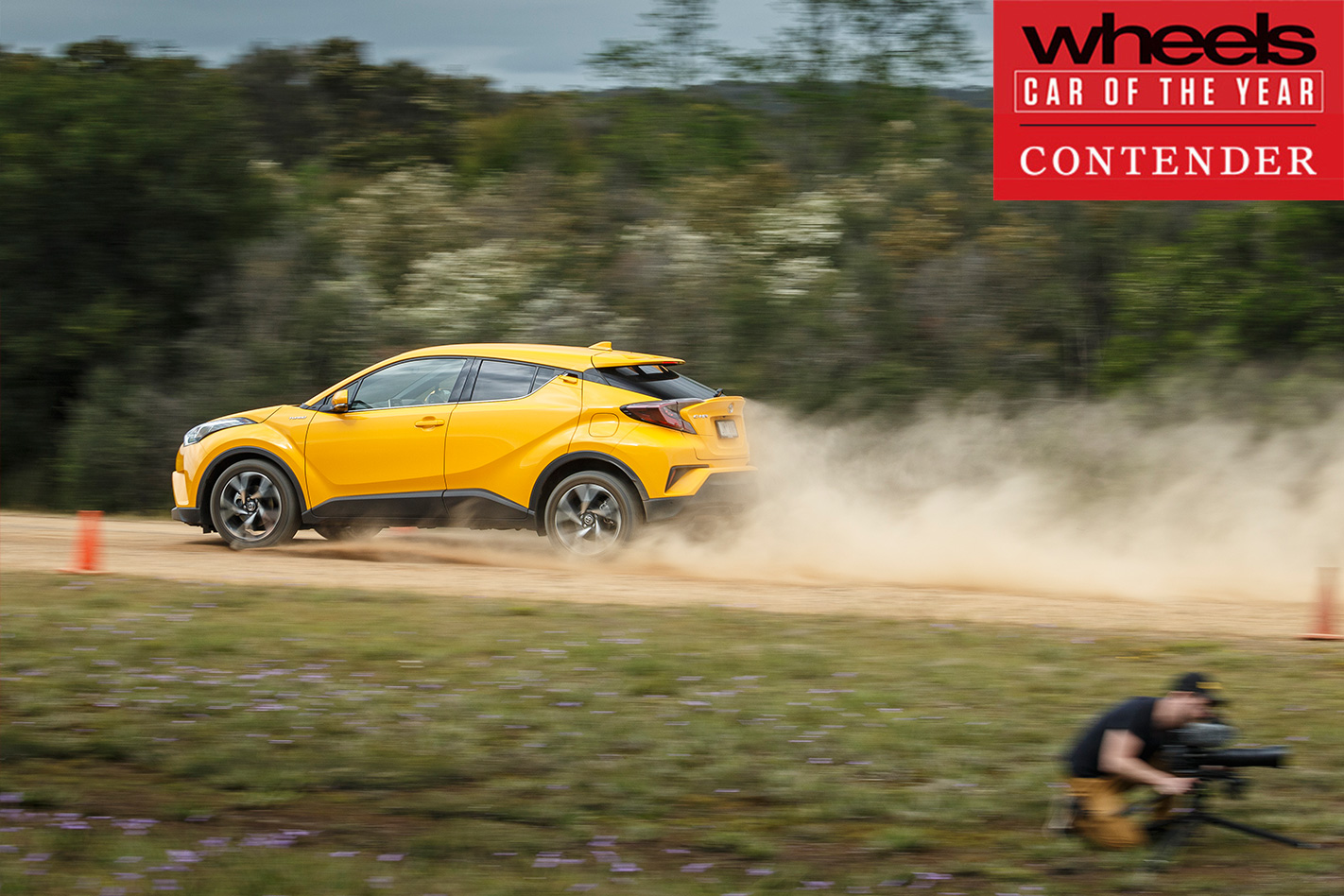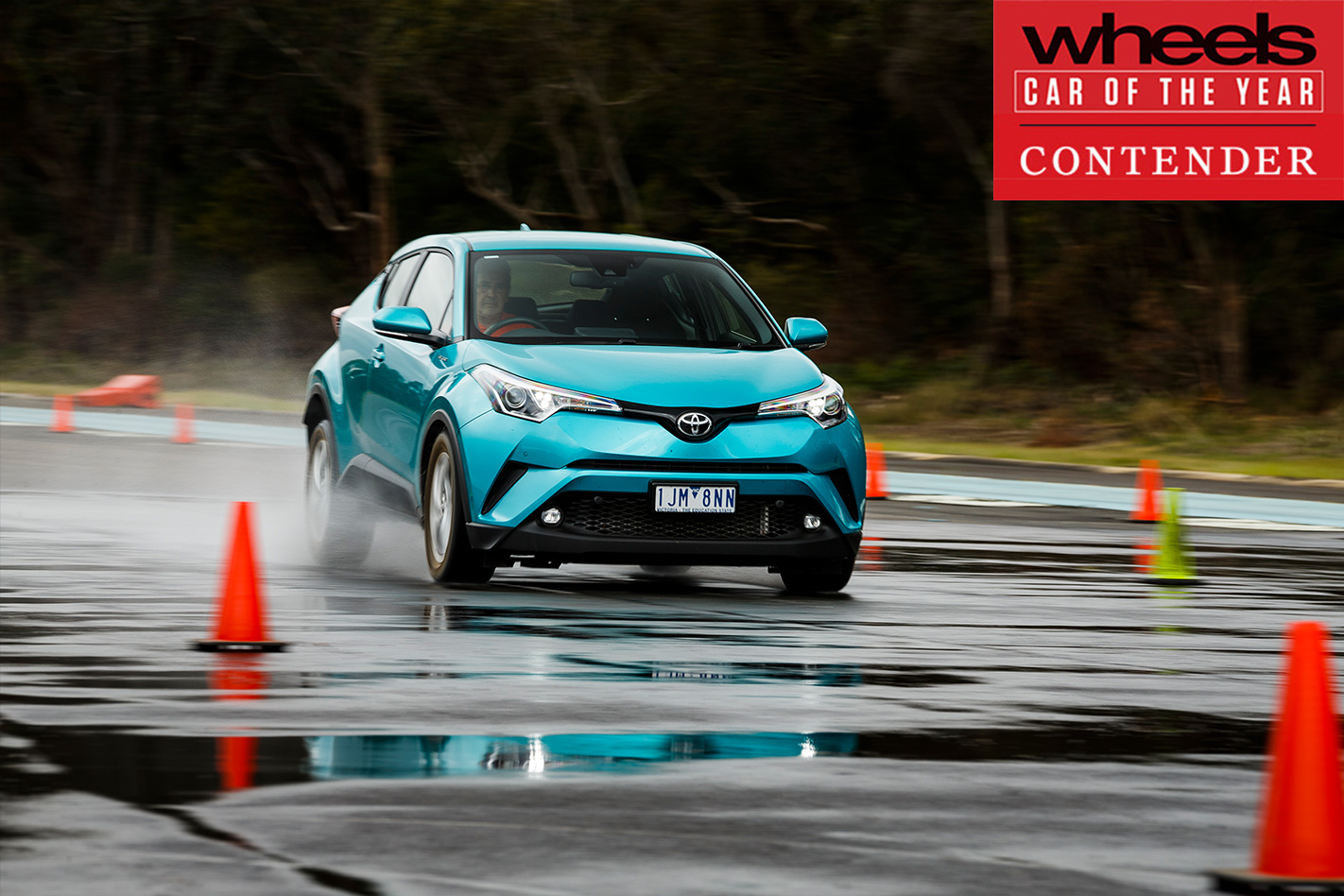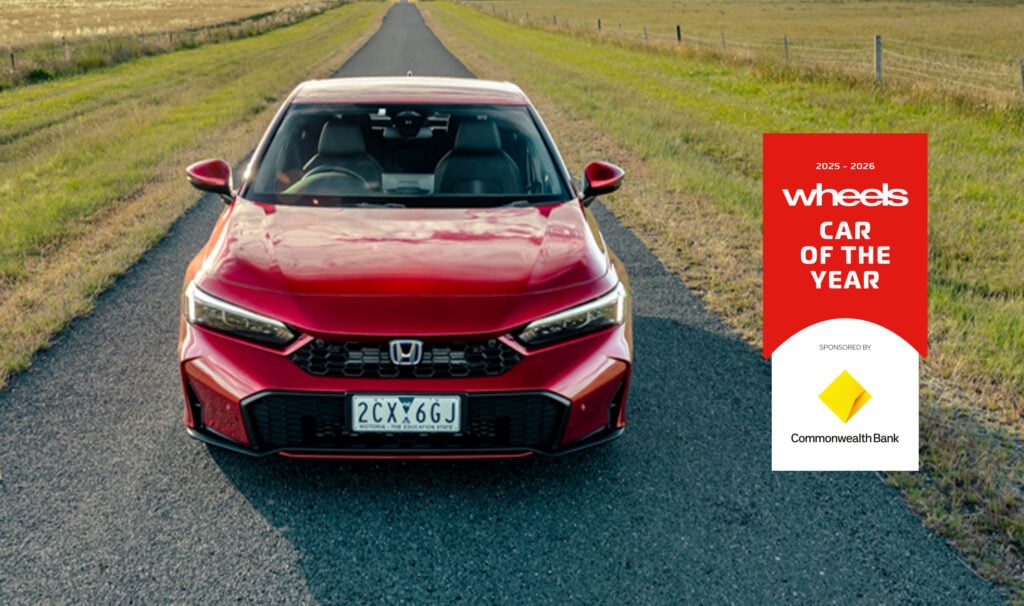IT’S A genuine rarity, a Toyota with style and spirit.
The Japanese giant is ultra-conservative, seldom deviating from the blandly anonymous competence millions of equally conservative customers seem to prefer. The Toyota C-HR is different.
This small SUV’s design, especially its exterior, is bold and confident. The same is true of the car’s technology.

The C-HR line-up is very simple; one engine, two transmissions, two drive layouts and two equipment grades.
The least costly basic C-HR has a six-speed manual and front-wheel drive, while the CVT auto comes with the choice of front- or all-wheel drive.
The more costly C-HR Koba is CVT-only, again with front- or all-wheel drive.

The Japanese 1.2-litre turbo four is also efficient, though it does require 95-octane petrol. On the other hand, servicing costs are very low, even by Toyota standards. The engine teams well with the C-HR’s automatic. With a low 5700rpm cut-out it’s no revver, and the well-calibrated CVT keeps the 1.2-litre turbo in its happy zone between 1500 and 4000rpm.
The six-speed manual is a delight to use, which is fortunate; that narrow band of usefulness means frequent shifting. With its bigger and better tyres, the Koba has greater grip, but there’s no mistaking the quality of the chassis beneath all C-HRs.

Ride comfort is also impressive. While the steering would be better if it delivered more feel, this Toyota is a more satisfying drive than the dreary class average.
The C-HR’s array of safety systems is also a cut above. Seven airbags, including one for the driver’s knees, are standard and the C-HR has already earned a five-star ANCAP crash rating.

In some ways the C-HR’s interior is outstanding. The instrument panel is one of Toyota’s best in recent times. And it’s more than just good looking; even the base-grade C-HR impresses with its quite lavish equipment levels. Further, both the front seats and driving position are spot on.
It’s a very different story in the back seat. Though there’s plenty of space back there, the ambience is dark and dismal. Pinched between diving roofline and rising beltline, the rear windows are small.

Other consequences of the C-HR’s tapered profile are cramped cargo space and poor rearward vision for the driver. These serious compromises were a step too far in the name of style.
For the 86th time, be less dull
Toyota’s last car with The Right Stuff was the 86 of 2012. Charismatic and affordable, the little coupe waltzed gracefully to Wheels COTY victory. But the 86 wasn’t 100 percent Toyota.







